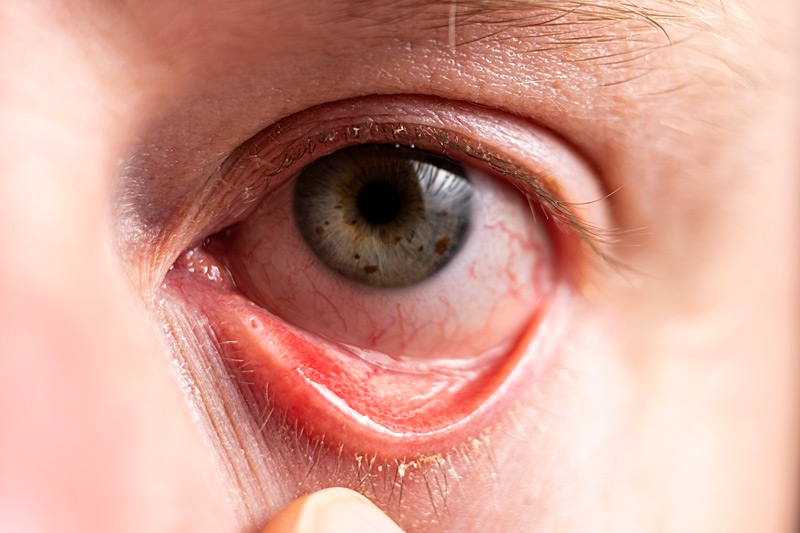Lots of things can make the skin on your eyelids dry and flakey. You can treat dry eyelids with gentle moisturizers. Occasionally, they might be a symptom of another condition.
Advertisement
Cleveland Clinic is a non-profit academic medical center. Advertising on our site helps support our mission. We do not endorse non-Cleveland Clinic products or services. Policy

Dry skin on your eyelids can make them scaly, itchy or flakey. Some people develop rough, red patches. Many common environmental factors can contribute to dry eyelids. In some cases, they might be a sign of a medical condition affecting your skin or your eyes.
Advertisement
Cleveland Clinic is a non-profit academic medical center. Advertising on our site helps support our mission. We do not endorse non-Cleveland Clinic products or services. Policy
Some of the same conditions can cause both dry eyelids and dry eyes. But lots of people just have one or the other. Having dry eyelids is not the same as having dry tear ducts. A lack of tears can lead to dry eyes, but it doesn’t affect the outer side of your eyelids.
The skin on your eyelids is thinner than anywhere else on your body. It doesn’t have the same protective fat layer beneath it that your other skin does. This makes it more vulnerable to environmental conditions that may cause dryness.
Eyelid skin also has a relatively high concentration of blood vessels, which makes it more sensitive to irritants in the environment that might cause an inflammatory reaction. In some cases, this reaction might look like dry skin patches.
Common environmental factors that might contribute to dry eyelids include:
Advertisement
Dry eyelids are sometimes a symptom of:
If dry eyelid skin is your only symptom, you can probably treat it at home with some basic skin care. If you have a chronic skin condition, like atopic dermatitis or psoriasis, or if your eyes are also irritated, you might need to consult your dermatologist or eye specialist.
To care for your dry eyelids at home:
Advertisement
If your dry eyelids don’t improve with self-care, or if you have other symptoms besides dry eyelid skin, it’s time to check in with a healthcare provider. You might need specific treatment for an allergy, skin condition or eye condition, like blepharitis.
Your eyelid skin is extra sensitive, which is why it might be the first to show signs that something in your environment is stressing your skin. Dry eyelids can be irritating, but they’re very treatable. If self-care doesn’t work, a healthcare provider can help.
Advertisement
Cleveland Clinic’s ophthalmologists and optometrists have the highest training available. We provide exams, vision correction and care for many eye conditions.

Last reviewed on 02/13/2024.
Learn more about the Health Library and our editorial process.